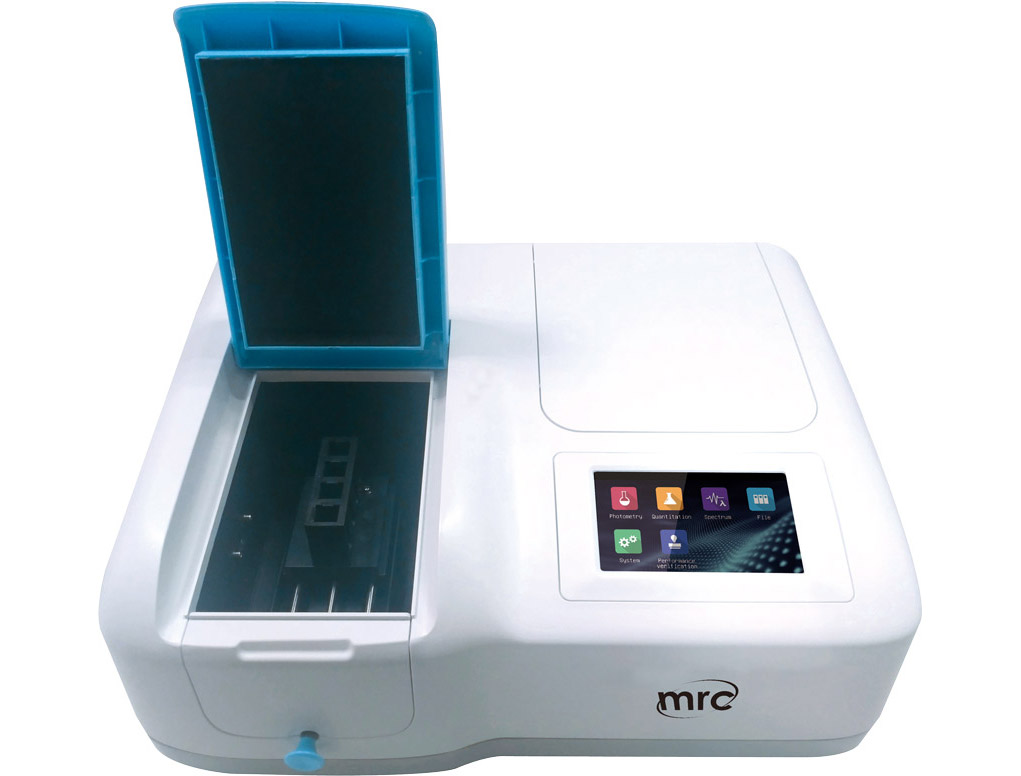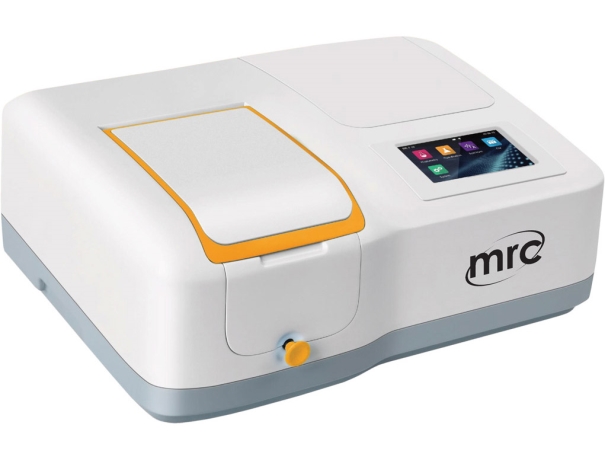A UV/VIS spectrophotometer is a scientific instrument used to measure the absorbance or transmittance of light across a specific range of wavelengths in the UV and VIS regions. It consists of a light source, a sample holder, a monochromator, a detector, and a display unit. The monochromator separates the incoming light into its constituent wavelengths, and the detector measures the intensity of light after it passes through the sample. This data is then displayed as a spectrum or analyzed for specific measurements.
Uses of UV/VIS spectrophotometer
Analysis of Chemical Substances
One of the primary applications of UV/VIS spectrophotometers is the analysis of chemical substances. By measuring the absorption spectra of compounds, scientists can identify and quantify unknown substances in various samples. UV/VIS spectrophotometry is particularly useful for analyzing the concentration of chromophores, which are compounds that absorb light at specific wavelengths. This technique is widely employed in pharmaceutical, environmental, and industrial laboratories.

Quantitative Analysis
UV/VIS spectrophotometry enables quantitative analysis by determining the concentration of a compound in a sample. This is achieved by measuring the absorbance of a known standard solution and creating a calibration curve. By comparing the absorbance of an unknown sample to the calibration curve, the concentration can be accurately determined. This method is widely used in pharmaceutical quality control, environmental monitoring, and clinical diagnostics.
Qualitative Analysis
In addition to quantitative analysis, UV/VIS spectrophotometry is also used for qualitative analysis. By studying the absorption spectra of different compounds, scientists can identify the presence of specific functional groups or chemical bonds. This information is crucial for determining the chemical composition of unknown samples or verifying the purity of synthesized compounds.
Biological and Biochemical Research
UV/VIS spectrophotometers find extensive use in biological and biochemical research. These instruments are employed for DNA and protein quantification, enzyme activity assays, and cell viability studies. UV/VIS spectrophotometry enables scientists to measure the absorption spectra of biological molecules, providing insights into their structure, concentration, and interactions with other compounds.
Pharmaceutical Applications
The pharmaceutical industry heavily relies on UV/VIS spectrophotometers for drug analysis and quality control. UV/VIS spectrophotometers are used to assess the purity, concentration, and stability of pharmaceutical compounds. These instruments aid in the development and formulation of drugs by ensuring that the desired compounds are present in the correct amounts. UV/VIS spectrophotometry is also employed in dissolution testing, where it helps determine the release rate of drugs from various formulations.

Environmental Monitoring
UV/VIS spectrophotometers are valuable tools in environmental sciences for monitoring and analyzing various parameters. These instruments are used to measure water quality indicators such as turbidity, organic matter content, and the presence of pollutants. By analyzing the absorption spectra of water samples, scientists can assess the environmental impact of pollutants and ensure compliance with regulatory standards. UV/VIS spectrophotometry is also employed in air quality monitoring to analyze atmospheric pollutants and monitor their concentrations.
Food and Beverage Industry
In the food and beverage industry, UV/VIS spectrophotometry plays a crucial role in quality control and safety assurance. These instruments are used to analyze the color, appearance, and composition of food and beverage products. UV/VIS spectrophotometers help in assessing the freshness of food items, detecting the presence of contaminants, and monitoring the levels of additives and preservatives. By ensuring product quality, UV/VIS spectrophotometry helps maintain consumer satisfaction and safety.
Forensic Analysis
These instruments aid forensic scientists in analyzing fibers, dyes, paints, and other materials found at crime scenes. UV/VIS spectrophotometry helps determine the composition and characteristics of these materials, aiding in criminal investigations and providing valuable evidence in court.
Material Science and Nanotechnology
Its play a significant role in material science and nanotechnology research. These instruments are used to characterize and analyze the optical properties of materials, including nanoparticles, thin films, and coatings. UV/VIS spectrophotometers help scientists understand light-matter interactions at the nanoscale, leading to the development of advanced materials with tailored optical properties for various applications, such as solar cells, sensors, and optoelectronic devices.
Agricultural Research
In agricultural research, They are used for the analysis of soil and plant samples. These instruments aid in assessing nutrient levels, detecting the presence of contaminants, and studying the physiological changes in plants. UV/VIS spectrophotometry enables scientists to measure various parameters, such as chlorophyll content, nitrogen levels, and enzyme activities, providing valuable insights into plant health, growth, and productivity.
Petrochemical Industry
The petrochemical industry utilizes UV/VIS spectrophotometry for the analysis of petroleum products and derivatives. These instruments are employed to determine the composition, purity, and quality of fuels, lubricants, and other petrochemical compounds. UV/VIS spectrophotometers help in assessing the presence of impurities, monitoring the efficiency of refining processes, and ensuring compliance with industry standards.
Water Quality Assessment
Used in water quality assessment, including the analysis of drinking water, wastewater, and natural water sources. These instruments aid in detecting and quantifying various water contaminants, such as heavy metals, organic pollutants, and disinfection by-products. UV/VIS spectrophotometry helps in monitoring water treatment processes, evaluating the efficiency of purification methods, and ensuring the safety of water for human consumption and environmental preservation.
Medical Diagnostics
These instruments are used for the quantification of biomarkers, analysis of blood samples, and detection of specific compounds in body fluids. UV/VIS spectrophotometry aids in the diagnosis and monitoring of various diseases, including liver disorders, kidney diseases, and certain types of cancers. It provides healthcare professionals with valuable insights into patient health and aids in the development of effective treatment strategies.